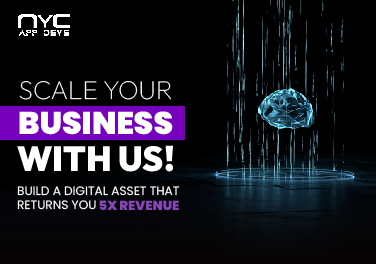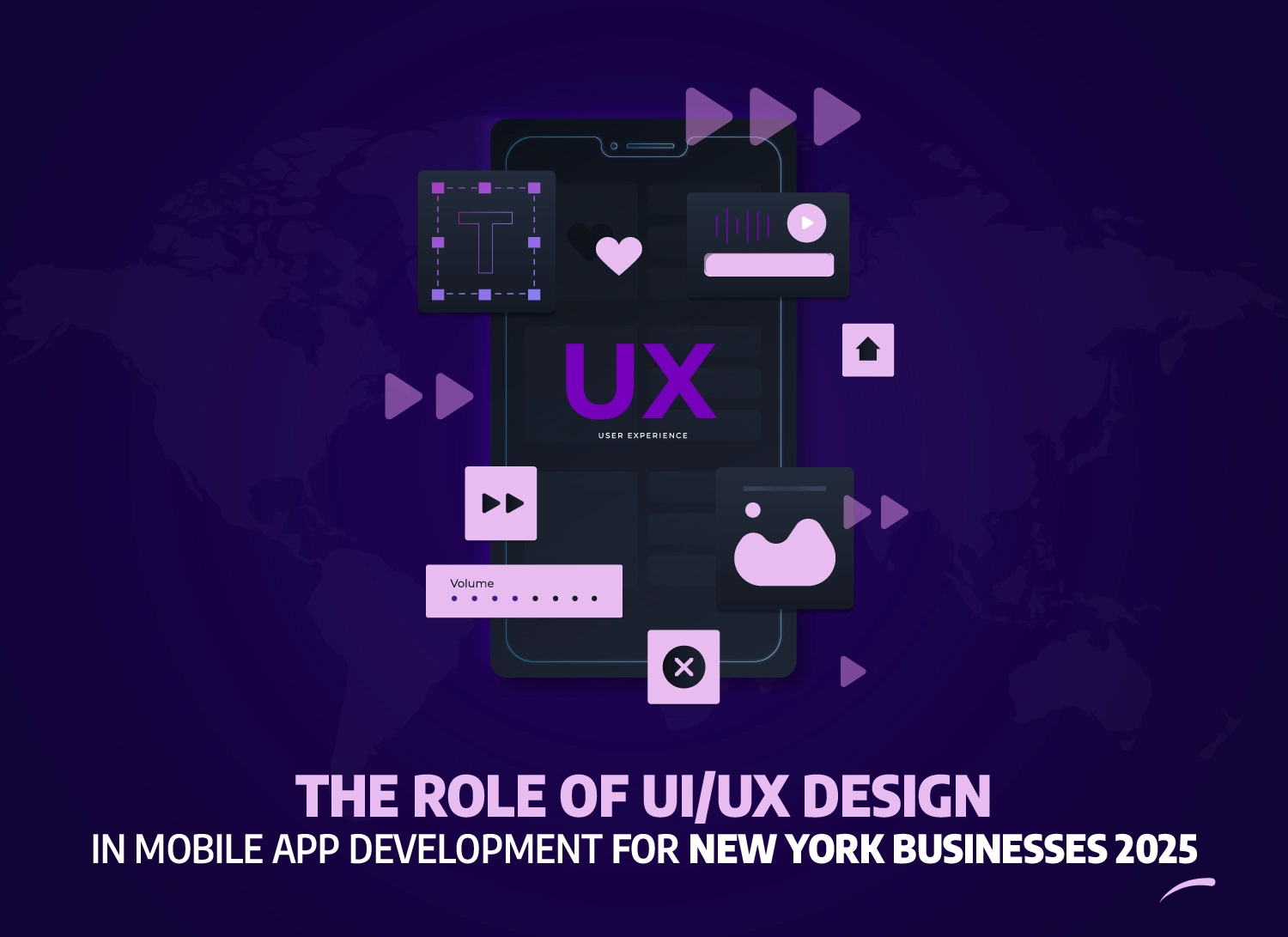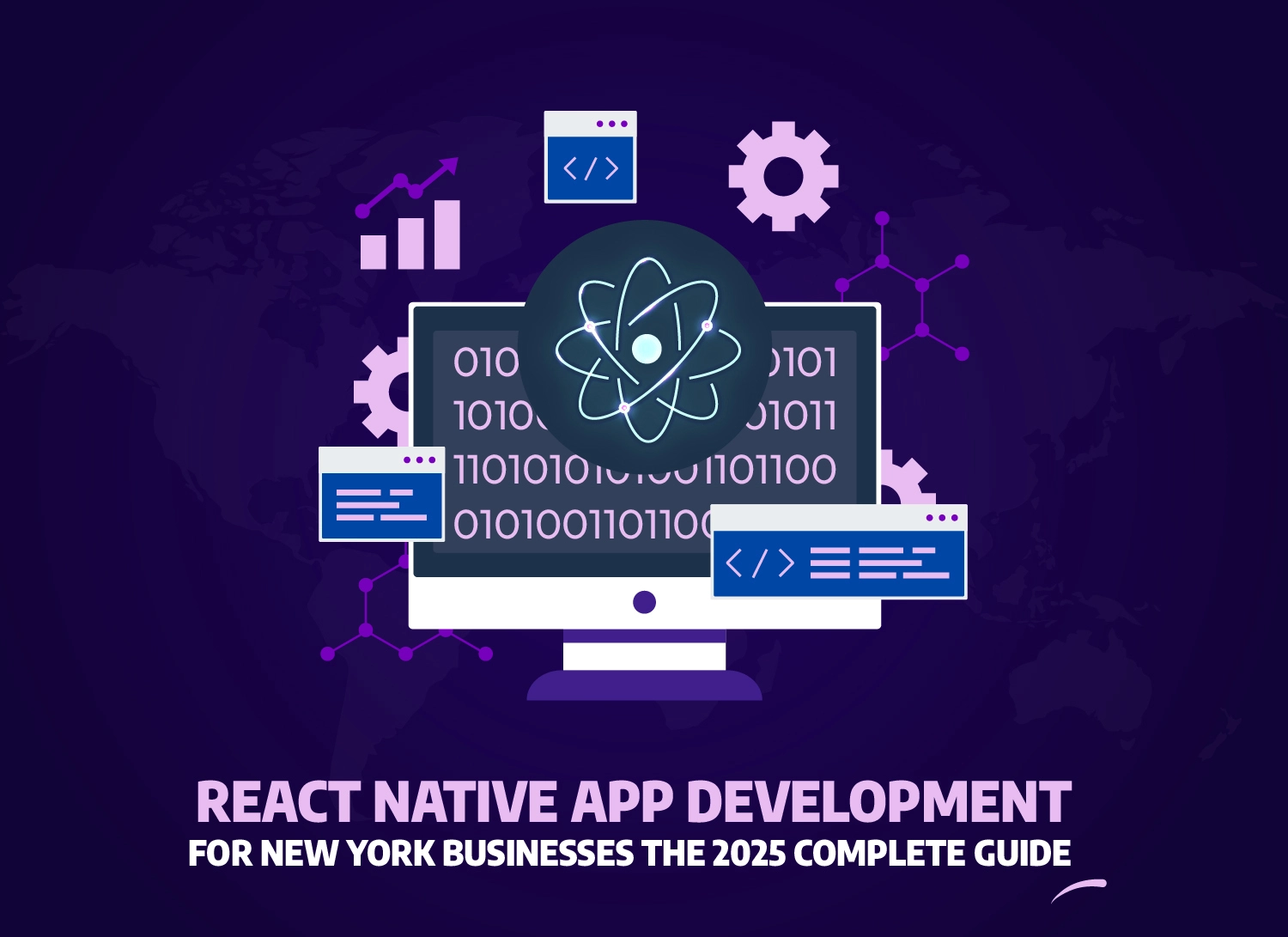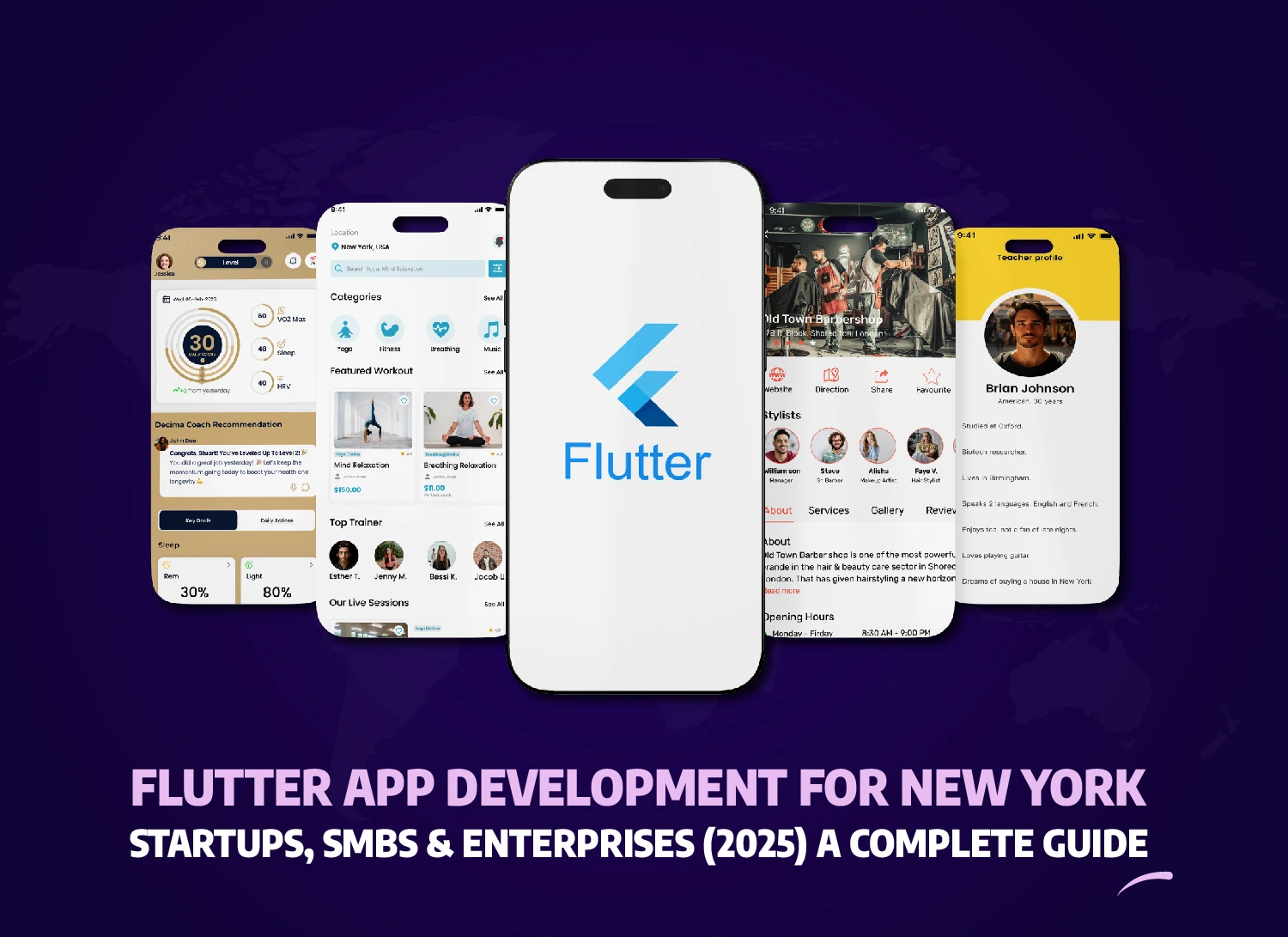- Introduction
- How Much Does Android App Development Cost for Businesses in New York?
- Your App Idea Deserves More Than a Price Tag.
- What Factors Affect Android App Development Cost in New York?
- Android App Development Cost by Business Type in New York
- Android vs iOS App Development Cost for New York Businesses
- Android App Developer Cost and Team Structure in New York
- Don’t Just Build an App. Build a Business Asset.
- Specialized Industry Android App Development Costs in New York
- Backend Development and Third-Party Integration Costs
- Hidden Costs and Long-term Investment Planning
- Geographic Trends and Regional Cost Variations
- Your Idea Deserves NYC’s Best Talent.
- At a Glance: Key Takeaways
- Frequently Asked Questions
- How much does it cost to develop an Android app for businesses in New York?
- What is the average cost breakdown for Android app development in New York?
- How much do Android app developers charge in New York?
- What factors increase Android app development costs for New York businesses?
- How much does ecommerce Android app development cost in New York?
- Should New York businesses choose Android or iOS development first?
- What are the ongoing costs after Android app development in New York?
- Conclusion: Take the Next Step
Share This Article
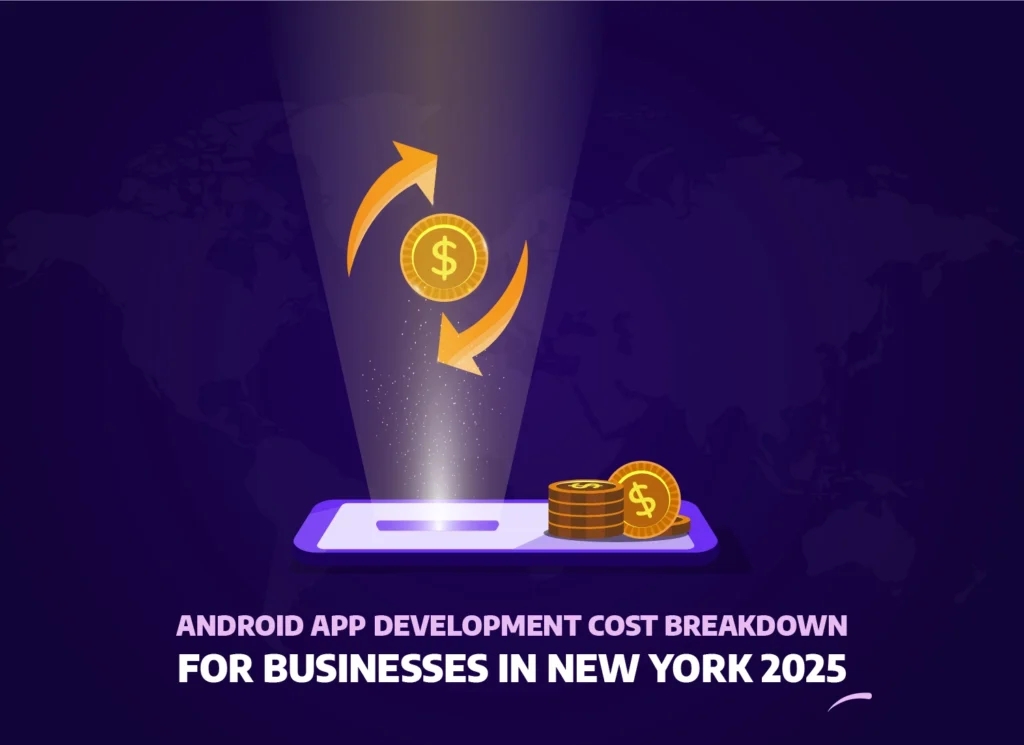
Introduction
Are you a New York business owner wondering how much it’ll cost to bring your Android app idea to life in 2025? With over 2.5 billion active Android devices globally and NYC’s thriving business ecosystem, understanding accurate development costs is crucial for making informed investment decisions. This comprehensive guide breaks down every aspect of Android app development pricing specifically for New York businesses.
Android app development costs for New York businesses range from $15,000-$300,000+ depending on complexity, features, and team structure, with additional considerations for local market demands and compliance requirements.
How Much Does Android App Development Cost for Businesses in New York?
New York Android app development costs vary significantly: simple apps ($15,000-$50,000), moderate complexity ($50,000-$150,000), and complex enterprise apps ($150,000-$300,000+), with NYC’s premium developer rates adding 20-30% above national averages.
The cost of Android app development in New York reflects the city’s status as a premium technology market. Local businesses benefit from accessing top-tier talent and expertise, but this quality comes at a price point that reflects NYC’s competitive landscape.
Basic App Cost Range ($15,000 – $50,000)
Simple Android applications with basic functionality typically fall within this range. These apps include fundamental features like user registration, basic navigation, and standard UI components. Development timelines usually span 2-4 months with minimal backend requirements.
- Simple functionality apps with 5-10 screens
- Basic UI/UX design using standard templates
- Standard features like user profiles and basic navigation
- Limited third-party integrations
- Basic testing and quality assurance
Moderate Complexity Apps ($50,000 – $150,000)
Mid-range applications require custom features, advanced UI/UX design, and multiple integrations. These projects typically serve growing businesses that need competitive functionality and professional polish. Development cycles extend to 4-8 months with dedicated backend systems.
- Custom features and advanced user interfaces
- Third-party integrations (payment gateways, social media)
- Backend development with API creation
- Advanced analytics and user tracking
- Comprehensive testing across multiple devices
Your App Idea Deserves More Than a Price Tag.
Let’s Talk
We don’t just estimate costs—we show you how to maximize revenue and long-term growth.
Enterprise-Level Applications ($150,000 – $300,000+)
Complex enterprise applications require sophisticated business logic, advanced security measures, and extensive compliance features. These projects often integrate with existing business systems and support large user bases with scalable infrastructure.
- Complex business workflows and custom algorithms
- Advanced security and compliance (GDPR, PCI, HIPAA)
- Multiple system integrations and APIs
- Scalable cloud infrastructure
- Comprehensive testing and security audits
According to Clutch’s 2024 survey, NYC app development agencies charge 25-30% higher rates than national averages due to premium talent availability and higher operational costs in the metropolitan area.
| App Type | Cost Range | Timeline | Key Features |
|---|---|---|---|
| Basic | $15,000-$50,000 | 2-4 months | Simple UI, basic features |
| Moderate | $50,000-$150,000 | 4-8 months | Custom design, integrations |
| Enterprise | $150,000-$300,000+ | 8+ months | Complex workflows, security |
What Factors Affect Android App Development Cost in New York?
App complexity, UI/UX design requirements, feature count, backend infrastructure needs, third-party integrations, compliance requirements, and development team location are the primary cost drivers for NYC businesses.
Understanding cost factors helps New York businesses make informed decisions about their Android app investment. Each element contributes differently to the overall budget, with some offering opportunities for cost optimization.
App Complexity and Feature Set
Feature complexity directly impacts development time and costs. Simple features like login systems require basic implementation, while advanced functionality such as real-time chat, GPS tracking, or machine learning algorithms demand specialized expertise and extended development periods.
- Number of screens and user flow complexity
- Advanced features (AR/VR, machine learning, IoT connectivity)
- Real-time functionality and push notifications
- Offline capability and data synchronization
- Multi-language support and localization
UI/UX Design Requirements
Design quality significantly influences user adoption and business success. Custom designs require extensive research, wireframing, and iterative refinement, while template-based approaches offer cost savings but limited differentiation in competitive markets.
- Custom design versus template utilization
- Animation and interactive elements
- User research and usability testing phases
- Accessibility compliance standards (WCAG)
- Brand consistency and visual identity integration
Backend and API Development
Backend infrastructure powers app functionality and data management. Simple apps may use existing services, while complex applications require custom backend development, database architecture, and API creation to support unique business requirements.
- Database architecture and data modeling
- Custom API development and documentation
- Third-party service integrations
- Security implementation and data protection
- Scalability planning for future growth
Technical Infrastructure Considerations
Infrastructure decisions affect both initial development costs and ongoing operational expenses. Cloud hosting, content delivery networks, and monitoring systems require careful planning to balance performance, scalability, and budget constraints.
What Is Cloud Infrastructure?
Cloud infrastructure provides scalable computing resources through internet-based services, eliminating the need for physical servers while offering flexible pricing based on actual usage and demand.
Based on industry experience, NYC businesses often underestimate backend complexity costs, which typically account for 40-60% of total development expenses for data-driven applications.
| Cost Factor | Impact Level | Typical Cost Increase |
|---|---|---|
| App Complexity | High | 50-200% |
| Custom UI/UX | Medium | 20-50% |
| Backend Development | High | 40-100% |
| Third-party Integrations | Medium | 15-40% |
Android App Development Cost by Business Type in New York
Startups typically budget $15,000-$75,000 for MVP development, SMBs invest $50,000-$150,000 for competitive apps, while enterprises allocate $150,000-$500,000+ for comprehensive solutions with advanced features.
Different business types have varying requirements, budgets, and strategic objectives that influence their Android app development approach. Understanding these differences helps optimize investment for maximum return.
Cost to Develop Android Apps for Startups in New York
Startups typically focus on MVP (Minimum Viable Product) development to validate market demand while conserving resources. This approach emphasizes core functionality over premium features, allowing rapid market entry and user feedback collection.
- MVP development approach with essential features only
- Lean development methodology for rapid iteration
- Focus on user validation and market fit testing
- Basic analytics to measure user engagement
- Cost-effective hosting and infrastructure solutions
SMB Android App Development Costs
Small and medium businesses require apps that compete effectively while integrating with existing operations. These projects balance functionality with budget constraints, often including customer engagement features and basic business system integration.
- Moderate feature set balancing cost and functionality
- Customer engagement and retention features
- Integration with existing business systems (CRM, inventory)
- Local market optimization and compliance
- Professional UI/UX design for brand consistency
Enterprise Android App Development Investment
Enterprise applications require comprehensive solutions supporting complex workflows, extensive security measures, and integration with multiple business systems. These projects prioritize scalability, compliance, and advanced functionality over cost optimization.
- Comprehensive solutions with advanced workflows
- Enterprise-grade security and compliance features
- Complex integrations with legacy systems
- Scalability planning for large user bases
- Dedicated support and maintenance teams
ROI and Budget Planning Strategies
Successful app investment requires careful ROI planning and realistic budget allocation. Consider revenue models, market penetration timelines, and long-term growth objectives when determining appropriate investment levels.
What Is ROI in App Development?
ROI (Return on Investment) measures the financial return generated by app development costs, calculated by comparing revenue increases or cost savings against the total investment in development and maintenance.
| Business Type | Typical Budget | Primary Focus | Timeline |
|---|---|---|---|
| Startup | $15,000-$75,000 | MVP validation | 2-4 months |
| SMB | $50,000-$150,000 | Competition & growth | 4-6 months |
| Enterprise | $150,000-$500,000+ | Comprehensive solution | 6-12 months |
Android vs iOS App Development Cost for New York Businesses
Android development typically costs 10-20% less than iOS due to shorter development cycles, but iOS apps often generate higher revenue per user in NYC’s affluent market, affecting ROI calculations.
Platform selection significantly impacts both development costs and revenue potential. New York’s unique market demographics and user behavior patterns influence the optimal platform strategy for different business types and target audiences.
Development Cost Comparison
Android development generally requires less initial investment due to lower platform fees and more flexible development tools. However, device fragmentation increases testing costs, while iOS development benefits from more predictable hardware configurations.
- Android: Lower entry costs but diverse device testing requirements
- iOS: Higher developer fees but streamlined development process
- Cross-platform alternatives: React Native and Flutter considerations
- Testing complexity varies by platform choice
Market Share and User Demographics in NY
New York’s market shows interesting patterns with iOS maintaining slight dominance among affluent demographics while Android serves a broader, more diverse user base. These demographics significantly influence revenue potential and user engagement strategies.
- Android: 45% market share with diverse income demographics
- iOS: 55% market share concentrated in higher income brackets
- Business application adoption varies by industry sector
- Enterprise market shows strong preference diversityc
Revenue Potential Analysis
Revenue generation patterns differ significantly between platforms in New York’s market. According to Statista’s 2024 mobile app revenue report, iOS users typically spend 2.5x more on app purchases and in-app transactions, while Android provides broader market reach.
| Platform | Development Cost | NYC Market Share | Revenue Potential |
|---|---|---|---|
| Android | $15,000-$300,000 | 45% | High volume, lower ARPU |
| iOS | $20,000-$350,000 | 55% | Premium users, higher ARPU |
| Cross-Platform | $25,000-$400,000 | Both | Broader reach, shared costs |
Android App Developer Cost and Team Structure in New York
NYC Android developers command $80,000-$180,000 annually, agencies charge $100-$250/hour, while offshore teams offer $25-$75/hour, each with distinct advantages for different project needs.
Team structure decisions significantly impact both project costs and outcomes. New York’s competitive talent market offers various engagement models, each with specific advantages for different business requirements and budget constraints.
In-House Development Team Costs
Building an internal development team provides maximum control and long-term asset creation but requires substantial investment in salaries, benefits, and infrastructure. This approach works best for companies with ongoing development needs and sufficient project volume.
- Senior Android Developer: $120,000-$180,000/year plus benefits
- UI/UX Designer: $80,000-$130,000/year plus benefits
- Backend Developer: $110,000-$170,000/year plus benefits
- Project Manager: $90,000-$140,000/year plus benefits
- Quality Assurance Engineer: $70,000-$110,000/year plus benefits
Don’t Just Build an App. Build a Business Asset.
Let’s Talk
Our cost strategy ensures your app generates returns — not just downloads.
NYC Agency Partnership Rates
Local agencies offer expertise, established processes, and immediate team availability. NYC agencies typically charge premium rates but provide local market understanding, regulatory knowledge, and direct communication advantages for complex projects.
- Hourly rates: $100-$250/hour depending on team seniority
- Fixed project pricing with defined scope and deliverables
- Full-service capabilities including design, development, and marketing
- Local market expertise and compliance knowledge
- Established quality assurance and project management processes
Outsourcing and Remote Team Options
Remote development offers significant cost savings while accessing global talent pools. Success requires careful vendor selection, clear communication protocols, and appropriate project management to overcome timezone and cultural differences.
- Eastern Europe: $40-$75/hour with strong technical skills
- India: $25-$50/hour with large talent availability
- Latin America: $35-$65/hour with favorable timezone alignment
- Hybrid models combining local management with remote development
- Communication tools and project management overhead
Team Structure Optimization
Optimal team structure depends on project complexity, timeline requirements, and ongoing maintenance needs. Many successful NYC businesses adopt hybrid approaches that balance cost efficiency with quality and communication requirements.
What Is a Hybrid Development Team?
A hybrid development team combines local project management and key roles with remote specialized talent, optimizing costs while maintaining quality and communication standards for complex projects.
Industry experience shows NYC businesses achieve optimal results with hybrid models—local project management and key roles combined with specialized remote talent for cost efficiency.
| Team Type | Cost Range | Best For | Key Advantages |
|---|---|---|---|
| In-House | $400,000-$800,000/year | Large enterprises | Full control, IP security |
| NYC Agency | $100-$250/hour | Complex projects | Local expertise, quality |
| Remote Team | $25-$75/hour | Cost-sensitive projects | Lower costs, global talent |
| Hybrid Model | $50-$150/hour | Balanced approach | Cost efficiency, quality |
Specialized Industry Android App Development Costs in New York
Specialized apps require premium investment: ecommerce apps ($40,000-$200,000), fintech solutions ($75,000-$400,000), and healthtech applications ($60,000-$350,000) due to regulatory compliance and security requirements.
Industry-specific applications require specialized knowledge, compliance features, and advanced security measures that significantly impact development costs. New York’s diverse business ecosystem demands apps that meet strict regulatory and functional requirements.
Ecommerce Android App Development Cost
Ecommerce mobile app development requires sophisticated payment processing, inventory management, and user experience optimization. NYC’s competitive retail environment demands high-quality shopping experiences that drive conversion and customer retention.
- Basic online store: $40,000-$100,000 with standard features
- Advanced marketplace: $100,000-$200,000 with vendor management
- Payment gateway integration (Stripe, PayPal, Square)
- Inventory management and real-time synchronization
- Advanced analytics and customer behavior tracking
Fintech App Development Investment
Fintech mobile app development demands the highest security standards and regulatory compliance. NYC’s position as a global financial center requires apps that meet stringent security and regulatory requirements while delivering exceptional user experiences.
- Simple financial apps: $75,000-$150,000 for basic services
- Complex trading platforms: $200,000-$400,000 with advanced features
- PCI DSS compliance and data encryption requirements
- Advanced security measures and fraud prevention
- Integration with banking systems and financial APIs
Healthcare and MedTech Applications
Healthcare mobile app development requires HIPAA compliance and medical device integration capabilities. NYC’s advanced healthcare system demands apps that integrate seamlessly with existing medical infrastructure while protecting patient privacy.
- Basic health and wellness apps: $60,000-$150,000
- HIPAA-compliant clinical solutions: $150,000-$350,000
- Integration with Electronic Health Records (EHR) systems
- Medical device connectivity and data synchronization
- Regulatory approval processes and compliance auditing
EdTech and Learning Platforms
Education mobile app development focuses on engagement, progress tracking, and content management. NYC’s educational institutions require sophisticated learning management features and accessibility compliance.
- Educational apps: $35,000-$120,000 for content delivery
- Interactive learning platforms: $80,000-$250,000 with gamification
- Learning Management System (LMS) integration
- Progress tracking and analytics dashboards
- Accessibility compliance (Section 508, WCAG)
Real Estate and Property Management Apps
Real estate mobile app development requires property listing management, virtual tour capabilities, and mortgage calculation tools. NYC’s competitive real estate market demands apps that provide comprehensive property information and seamless transaction support.
| Industry | Cost Range | Key Requirements | Compliance Needs |
|---|---|---|---|
| E-commerce | $40,000-$200,000 | Payment processing, inventory | PCI DSS, GDPR |
| Fintech | $75,000-$400,000 | Security, real-time data | PCI DSS, SOX, AML |
| Healthcare | $60,000-$350,000 | EHR integration, patient data | HIPAA, FDA approval |
| Education | $35,000-$250,000 | Content management, tracking | FERPA, Section 508 |
| Real Estate | $45,000-$180,000 | Listings, virtual tours | Fair Housing Act |
Backend Development and Third-Party Integration Costs
Backend development typically accounts for 30-50% of total app costs ($10,000-$100,000+), with third-party integrations adding $2,000-$15,000 per service depending on complexity and customization requirements.
Backend infrastructure and service integrations form the foundation of modern Android applications. These components handle data management, user authentication, and external service connectivity that enable rich app functionality.
Backend Development Architecture
Custom backend development provides maximum flexibility and performance optimization but requires significant investment in architecture design, database optimization, and API development. Cloud-based solutions offer scalability advantages for growing NYC businesses.
- Database design and optimization for performance
- REST API development with comprehensive documentation
- User authentication and authorization systems
- Server infrastructure setup and configuration
- Cloud hosting optimization (AWS, Google Cloud, Azure)
Essential Third-Party Integrations
Strategic third-party integrations accelerate development while providing proven functionality. Popular services offer reliable APIs and established security standards, reducing development risk and time-to-market for NYC businesses.
- Firebase integration: $3,000-$10,000 for real-time database and authentication
- Google Maps implementation: $2,000-$8,000 for location services
- Payment gateways (Stripe, Square): $4,000-$12,000 for transaction processing
- Push notification services: $1,500-$5,000 for user engagement
- Social media authentication: $2,000-$6,000 for login integration
Advanced Integration Requirements
Complex business applications often require integration with specialized systems and services. These integrations demand custom development work and thorough testing to ensure reliable data exchange and system compatibility.
- CRM system integration (Salesforce, HubSpot)
- Enterprise Resource Planning (ERP) connectivity
- Analytics platforms (Google Analytics, Mixpanel)
- Communication tools (Twilio, SendGrid)
- Business intelligence and reporting systems
Security and Compliance Implementation
Security implementation requires careful planning and expert execution to protect user data and comply with regulations. NYC businesses must consider various compliance requirements depending on their industry and target market.
What Is API Security?
API security involves implementing authentication, encryption, and access controls to protect data exchange between applications and servers, preventing unauthorized access and data breaches.
| Integration Type | Cost Range | Complexity Level | Timeline |
|---|---|---|---|
| Firebase | $3,000-$10,000 | Medium | 1-2 weeks |
| Payment Gateway | $4,000-$12,000 | High | 2-3 weeks |
| Google Maps | $2,000-$8,000 | Medium | 1-2 weeks |
| Social Auth | $2,000-$6,000 | Low | 1 week |
| Custom ERP | $10,000-$25,000 | Very High | 4-8 weeks |
Hidden Costs and Long-term Investment Planning
Hidden costs include app store fees, ongoing maintenance (15-20% of development cost annually), server hosting, updates, and marketing, typically adding $15,000-$50,000 yearly for established apps.
Successful app ownership extends far beyond initial development investment. NYC businesses must plan for ongoing expenses that ensure app performance, security, and competitive advantage in dynamic markets.
Ongoing Maintenance and Updates
Regular maintenance ensures app performance, security, and compatibility with evolving technologies. Android’s frequent OS updates and device diversity require continuous testing and optimization to maintain user experience quality.
- Bug fixes and performance optimization: $2,000-$5,000 quarterly
- Android OS compatibility updates: $3,000-$8,000 annually
- Security patches and vulnerability fixes: $1,500-$4,000 quarterly
- Feature enhancements based on user feedback: $5,000-$15,000 annually
- Third-party service updates and API changes: $2,000-$6,000 annually
Infrastructure and Operational Costs
Operational expenses scale with app usage and success. Growing user bases require infrastructure upgrades, increased storage capacity, and enhanced performance monitoring to maintain service quality standards.
- Server hosting and cloud services: $100-$2,000 monthly
- Database management and scaling: $50-$1,000 monthly
- Content delivery network (CDN): $50-$500 monthly
- Third-party service subscriptions: $100-$1,500 monthly
- Monitoring and analytics tools: $50-$300 monthly
App Store and Marketing Expenses
App visibility and user acquisition require ongoing investment in marketing and optimization. Google Play Store policies and algorithm changes demand continuous attention to maintain app discoverability.
- Google Play Store developer fees: $25 one-time registration
- App Store Optimization (ASO): $1,000-$3,000 monthly
- Digital marketing and user acquisition: $2,000-$10,000 monthly
- Analytics and performance monitoring: $100-$500 monthly
- Customer support systems: $500-$2,000 monthly
Modernization and Scalability Planning
Technology evolution requires periodic app modernization to maintain competitive advantage and performance standards. Planning for major updates and platform changes prevents obsolescence and user attrition.
What Is App Modernization?
App modernization involves updating technology stacks, user interfaces, and functionality to align with current standards, improve performance, and maintain compatibility with latest devices and operating systems.
Based on industry experience, successful NYC businesses typically allocate 25-30% of initial development costs annually for maintenance, updates, and incremental improvements to maintain competitive advantage.
| Cost Category | Annual Range | Frequency | Impact |
|---|---|---|---|
| Maintenance & Updates | $10,000-$30,000 | Ongoing | Critical for performance |
| Infrastructure | $1,200-$12,000 | Monthly | Scales with usage |
| Marketing & ASO | $12,000-$156,000 | Monthly | Drives user acquisition |
| Modernization | $5,000-$50,000 | Every 2-3 years | Maintains competitiveness |
Geographic Trends and Regional Cost Variations
Regional cost variations stem from developer talent availability, market maturity, and regulatory environments, with NYC representing a premium market offering high-quality development at 20-30% above national averages.
Geographic factors significantly influence Android app development costs and quality standards. Understanding these variations helps NYC businesses make informed decisions about team selection and budget allocation for optimal project outcomes.
Factors Influencing Regional Cost Differences
Multiple factors contribute to regional cost variations in app development. Infrastructure maturity, regulatory environments, and talent availability create distinct pricing structures across different markets and geographic regions.
- Infrastructure Maturity: Advanced regions like NYC offer superior infrastructure and established talent pools at premium pricing
- Policy Environment: Stricter regulatory frameworks in financial centers increase compliance costs and development complexity
- Cultural/Economic Conditions: Premium markets command higher rates due to cost of living and elevated business expectations
- Industry Development: Tech-mature regions provide specialized expertise and established processes at corresponding price points
Comparison of Regional Development Trends
Different markets offer distinct advantages and cost structures for Android development projects. According to Gartner’s 2024 IT services report, regional variations reflect local economic conditions, talent availability, and market sophistication levels.
| Region Type | Key Characteristics | Cost Implications |
|---|---|---|
| Premium Markets (NYC-type) | High talent density, strict compliance | 20-30% above average, superior quality |
| Emerging Tech Hubs | Growing talent, competitive pricing | 10-20% below premium, good value |
| Offshore Centers | Cost-efficient, scalable resources | 50-70% below premium, variable quality |
NYC’s Competitive Advantages
New York’s position as a global business center provides unique advantages for Android app development projects. Access to specialized talent, proximity to financial institutions, and established technology infrastructure justify premium pricing structures.
- Access to top-tier development talent and specialized agencies
- Proximity to major business clients and decision makers
- Strong regulatory knowledge and security expertise
- Established fintech and business application ecosystem
- Cultural understanding of premium user expectations
Your Idea Deserves NYC’s Best Talent.
Let’s Talk
Work with developers who understand the New York market, compliance, and user behavior.
At a Glance: Key Takeaways
- Cost Ranges: NYC Android development spans $15,000-$300,000+ with premium rates 20-30% above national averages
- Business Types: Startups budget $15,000-$75,000, SMBs invest $50,000-$150,000, enterprises allocate $150,000-$500,000+
- Team Options: In-house teams cost $400,000-$800,000 annually, agencies charge $100-$250/hour, remote teams offer $25-$75/hour
- Industry Specialization: Fintech apps cost most ($75,000-$400,000), healthcare requires HIPAA compliance ($60,000-$350,000)
- Hidden Costs: Annual maintenance typically equals 15-25% of initial development investment for ongoing operations
- Platform Choice: Android offers broader reach while iOS generates higher revenue per user in NYC’s affluent market
Frequently Asked Questions
How much does it cost to develop an Android app for businesses in New York?
Android app development costs for New York businesses range from $15,000 for basic apps to $300,000+ for complex enterprise solutions. NYC’s premium market typically adds 20-30% to national averages due to higher talent costs and market demands.
What is the average cost breakdown for Android app development in New York?
Typical cost breakdown includes: Development (40-50%), Design (15-20%), Backend/APIs (20-25%), Testing (10-15%), Project Management (10%), with additional costs for integrations, compliance, and ongoing maintenance adding 20-30% annually.
How much do Android app developers charge in New York?
NYC Android developers earn $80,000-$180,000 annually as employees, while agencies charge $100-$250/hour. Freelancers typically charge $50-$150/hour, with rates varying based on experience, specialization, and project complexity.
What factors increase Android app development costs for New York businesses?
Key cost drivers include app complexity, custom UI/UX design, backend development, third-party integrations, compliance requirements (GDPR, PCI), advanced security features, and the choice of premium local development teams.
How much does ecommerce Android app development cost in New York?
Ecommerce Android apps in NYC cost $40,000-$200,000 depending on features. Basic stores start at $40,000, while advanced marketplaces with payment integration, inventory management, and analytics reach $200,000+.
Should New York businesses choose Android or iOS development first?
For NYC businesses, iOS often provides higher revenue per user despite smaller market share, while Android offers broader reach. Consider your target demographic, budget constraints, and revenue model when choosing platforms.
What are the ongoing costs after Android app development in New York?
Annual maintenance costs typically equal 15-25% of initial development investment. Include app store fees, hosting, updates, security patches, feature enhancements, and marketing, usually totaling $15,000-$50,000 yearly.
Conclusion: Take the Next Step
In New York, Android app development in 2025 ranges from $15,000 for MVPs to $500,000+ for enterprise apps. understanding Android app development costs is crucial for New York businesses planning their digital transformation in 2025. While NYC development commands premium pricing—typically 20-30% above national averages—the investment reflects access to top-tier talent, regulatory expertise, and proximity to major business centers. Whether you’re a startup planning an MVP ($15,000-$75,000), an SMB developing competitive features ($50,000-$150,000), or an enterprise building comprehensive solutions ($150,000-$500,000+), proper budgeting for both development and ongoing maintenance ensures project success.
The key to controlling costs lies in clear requirements definition, appropriate team selection, and realistic timeline planning. Consider factors like app complexity, integration needs, compliance requirements, and long-term maintenance when budgeting. NYC businesses benefit from local agencies’ understanding of regulatory requirements and market dynamics, especially for fintech, healthcare, and ecommerce applications.
Ready to transform your business idea into a successful Android application? New York App Devs combines local market expertise with cutting-edge development practices, helping businesses across NYC and surrounding areas build powerful, cost-effective mobile solutions. Our experienced team understands the unique requirements of New York businesses and delivers applications that drive growth and user engagement through our comprehensive app development services.
As we move through 2025, expect continued evolution in development costs, with AI-powered development tools potentially reducing timelines while increasing feature sophistication, making professional guidance more valuable than ever. Contact us today to discuss your Android app development project and receive a detailed cost estimate tailored to your business needs.
